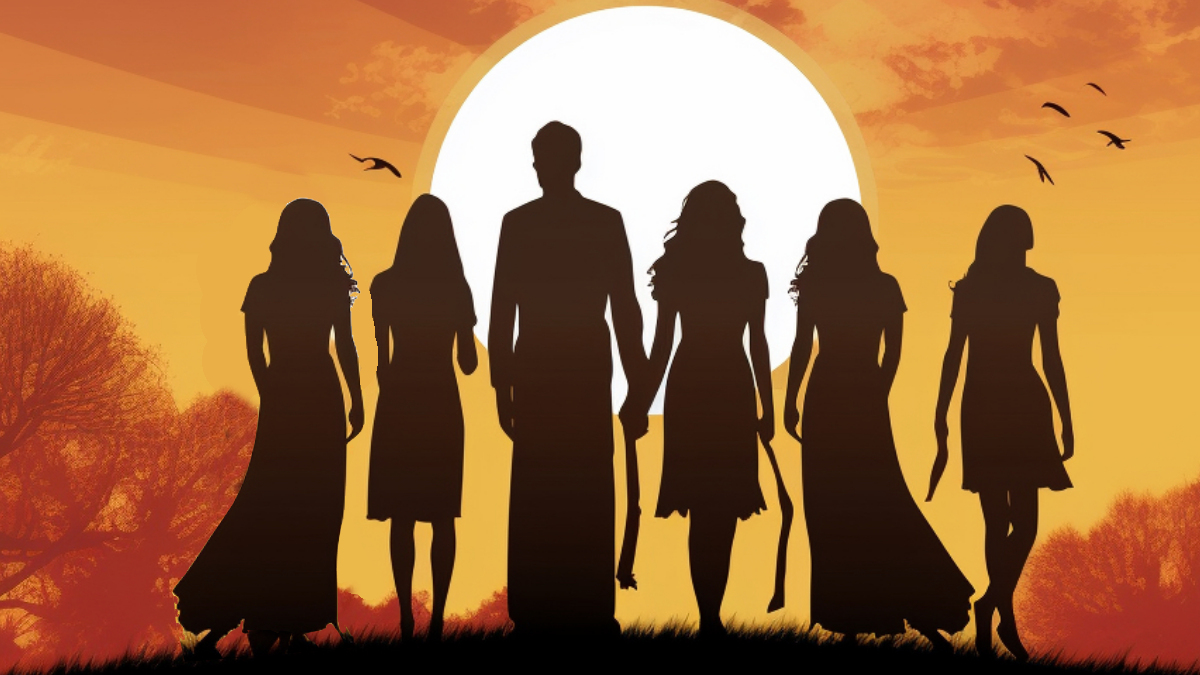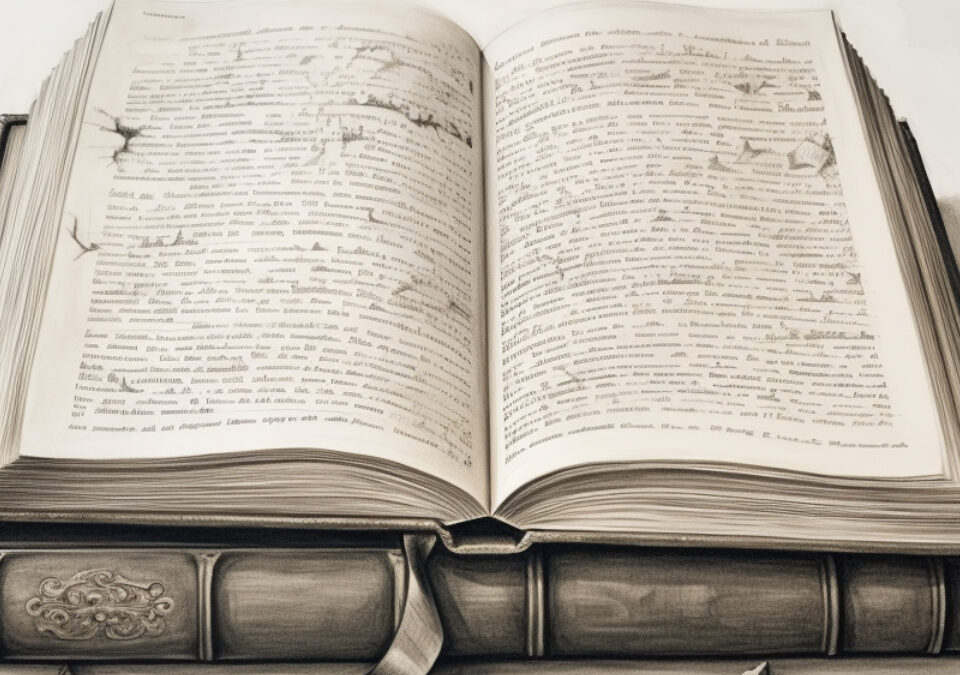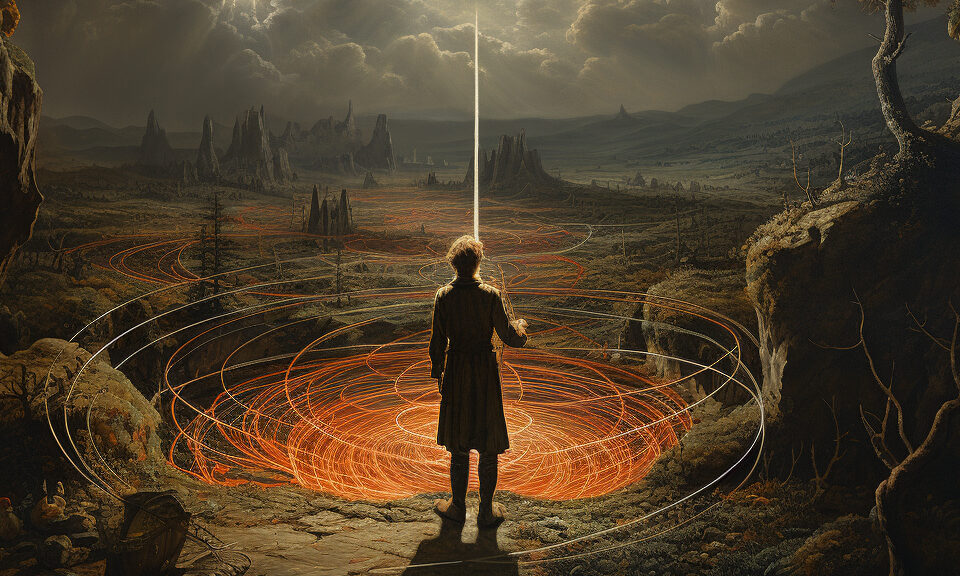
2. Polygamy was Illegal
October 1, 2024
4. Facts on the First Vision
October 5, 2024Polygamy pre-dates any recorded revelation sanctioning it. Joseph was practicing polygamy before the sealing authority was given.
Table of contents
- Polygamy pre-dates any recorded revelation sanctioning it. Joseph was practicing polygamy before the sealing authority was given.
- A1) In 1833, Fanny Alger was approximately 16 years old living and working as a maid in Joseph (28 years old) and Emma’s home. Joseph with Fanny is considered as perhaps the first plural marriage in Mormon history.
- A2) Emma caught Joseph and Fanny in the barn having what Oliver Cowdery described as “a dirty, nasty, filthy affair.”
- A3) In the community rumors began to be spread and “it became whispered about that Joseph’s love for his adopted daughter was by no means a paternal affection.”
- A4) Joseph did not ask Emma’s permission before being with Fanny.
- A5) There are no records that Joseph told anyone about polygamy at this time.
- A6) The evidence is inconclusive whether Joseph was ever married to Fanny and there is disagreement between historians, although the LDS church teaches that they were married secretly.
- A7) Doctrine & Covenants 132, the revelation on polygamy, was recorded in 1843. A full ten years after this event.
- A8) Elijah restores the sealing keys to Joseph Smith in the Kirtland temple on April 3, 1836, several years after Joseph being with Fanny.
- A9) This begins a pattern where Joseph secretly marries a teenage servant or family friend living in his home, and Emma forces the young woman out.
- A10) If Joseph was married to Fanny, the marriage was illegal. Joseph may have been guilty of the dictionary definition of adultery.
- A11) Joseph used an “exchange of women” to get favor to marry Fanny.
- Issues these Facts Raise
- Questions these Facts Raise
- Further Sources
A1) In 1833, Fanny Alger was approximately 16 years old living and working as a maid in Joseph (28 years old) and Emma’s home. Joseph with Fanny is considered as perhaps the first plural marriage in Mormon history.
Supporting Sources and Quotes
“Born in 1816 to Samuel and Clarissa Alger, Fanny Alger joined the Church with her family in the early 1830s and worked in Joseph Smith’s household in Kirtland, Ohio.”
- LDS Website, Fanny Alger
“Second, her marriage to him in Kirtland, Ohio, established a pattern that was repeated in Nauvoo, Illinois: Smith secretly marries a teenage servant or family friend living in his home, and his first wife Emma forces the young woman from the premises when she discovers the relationship. Third, Alger’s marriage to the prophet set another pattern–that of strengthening a bond with a male friend, in this case Levi Hancock, while weakening the bond with another friend, in this case Oliver Cowdery.”
- Todd M. Compton, In Sacred Loneliness: The Plural Wives of Joseph Smith. Signature Books.
“Approximately a year later, in early 1833, Joseph Smith, Jr., was joined to Fanny Alger in perhaps the first plural marriage in Mormon history. A number of sources, both contemporary and recollected, provide evidence that polygamy was developed and practiced in the New York and Kirtland period.”
- Todd M. Compton, In Sacred Loneliness: The Plural Wives of Joseph Smith. Signature Books.
Alger was fourteen when her family joined the Church in Mayfield, near Kirtland, in 1830. In 1836, after a time as a serving girl in the Smith household, she left Kirtland and soon married. Between those two dates, perhaps as early as 1831, she and Joseph were reportedly involved, but conflicting accounts make it difficult to establish the facts—much less to understand Joseph’s thoughts. Was he a blackguard covering his lusts with religious pretensions, or a prophet doggedly adhering to instructions from heaven, or something in between?”
- Richard L. Bushman, Joseph Smith: Rough Stone Rolling. Knopf Books.
A2) Emma caught Joseph and Fanny in the barn having what Oliver Cowdery described as “a dirty, nasty, filthy affair.”
Supporting Sources and Quotes
William McLellin, who was excommunicated in 1838, reported a conversation he had with Emma Smith in 1847 describing how the relationship was discovered:
One night she [Emma] missed Joseph and Fanny Alger. she went to the barn and saw him and Fanny in the barn together alone. She looked through a crack and saw the transaction!!! She told me this story too was verily true.
Quotedfrom:https://josephsmithspolygamy.org/common-questions/fanny-alger/#EmmaDiscoverstheRelationshipMcLellin reported on the event again three years afterward in 1875 to J. H. Beadle:
He [McLellin] was in the vicinity during all the Mormon troubles in Northern Missouri, and grieved heavily over the suffering of his former brethren. He also informed me of the spot where the first well authenticated case of polygamy took place in which Joseph Smith was “sealed” to the hired girl. The “sealing” took place in a barn on the hay mow, and was witnessed by Mrs. Smith through a crack in the door! The Doctor was so distressed about this case, (it created some scandal at the time among the Saints,) that long afterwards when he visited Mrs. Emma Smith at Nauvoo, he charged her as she hoped for salvation to tell him the truth about it. And she then and there declared on her honor that it was a fact—“saw it with her own eyes.”
- William McClellin, quoted in J. H. Beadle, “Jackson County,” 4. (Found online at: http://josephsmithspolygamy.org/common-questions/plural-marriages-sexual/fanny-alger-evidence-of-sexuality/)
- William McLelling Letter to Joseph Smith, III, July 1872, Community of Christ Archives, reprint in Stan Larson and Samuel J. Passey, eds., The William E. McLellin Papers, 1854-1880) Scan available at: https://mormonpolygamydocuments.org/wp-content/uploads/2015/01/JS1420.pdf
A3) In the community rumors began to be spread and “it became whispered about that Joseph’s love for his adopted daughter was by no means a paternal affection.”
Supporting Sources and Quotes
Ann Eliza continues: “Consequently it was with a shocked surprise that the people heard that sister Emma had turned Fanny out of the house in the night. … it was felt that she [Emma] certainly must have had some very good reason for her action. By degrees it became whispered about that Joseph’s love for his adopted daughter was by no means a paternal affection, and his wife, discovering the fact, at once took measures to place the girl beyond his reach.” This same pattern was repeated when the Partridge sisters, hired girls in Joseph’s home in Nauvoo, secretly married him and then were expelled by Emma; the latter also reportedly drove Eliza Snow suddenly from her house.
- Todd M. Compton, In Sacred Loneliness: The Plural Wives of Joseph Smith. Signature Books.
Ann Eliza continues: “Although her parents were living, they considered it the highest honor to have their daughter adopted into the prophet’s family, and her mother has always claimed that she [Fanny] was sealed to Joseph at that time.” The use of the term “sealed” is somewhat anachronistic but confirms that the parents accepted the relationship as a marriage.
Ann Eliza’s father, Chauncey Webb, gives another account of how Emma discovered the marriage: “He [Joseph Smith] was sealed there [in Kirtland] secretly to Fanny Alger. Emma was furious, and drove the girl, who was unable to conceal the consequences of her celestial relation with the prophet, out of her house.” Again an unsympathetic voice refers to the relationship as a marriage, a sealing. In addition, Webb acknowledges that this was a fully sexual union. Since there is no record of Fanny having a child, either Webb was mistaken (though this seems unlikely, if Fanny lived in his home after leaving the Smith home), the child was miscarried or died young, or it was raised under another name. Without further documentation, there is no way of knowing.
- Todd M. Compton, In Sacred Loneliness: The Plural Wives of Joseph Smith. Signature Books.
A4) Joseph did not ask Emma’s permission before being with Fanny.
That seems obvious given Emma's reaction to finding her husband with Fanny in the barn, however, I am unaware of any historian who has found evidence that Emma gave any permission.
A5) There are no records that Joseph told anyone about polygamy at this time.
Through the coming excommunication trial for Oliver Cowdery and the community rumors, there are no contemporary recorded evidence that Joseph Smith told anyone about polygamy or that he’d been married to Fanny Alger or that plural marriage was a commandment of God.
A6) The evidence is inconclusive whether Joseph was ever married to Fanny and there is disagreement between historians, although the LDS church teaches that they were married secretly.
Supporting Sources and Quotes
“Fragmentary evidence suggests that Joseph Smith acted on the angel’s first command by marrying a plural wife, Fanny Alger, in Kirtland, Ohio, in the mid-1830s. Several Latter-day Saints who had lived in Kirtland reported decades later that Joseph Smith had married Alger, who lived and worked in the Smith household, after he had obtained her consent and that of her parents.”
–LDS.org, Gospel Topic Essay, Plural Marriage in Kirtland and Navoo
As reported in the Plural Marriage in Kirtland and Navoo, “Several Latter-day Saints who had lived in Kirtland reported decades later that Joseph Smith had married Alger, who lived and worked in the Smith household, after he had obtained her consent and that of her parents.
–LDS.org, Gospel Topic Essay, Plural Marriage in Kirtland and Navoo
“Fawn Brodie’s 1946 biography of Smith presents his and Alger’s relationship as an affair, not a marriage, and other scholars have accepted this interpretation. This position follows the earliest contemporary reference to the Smith-Alger relationship, an 1838 letter written by Oliver Cowdery at a time when he was estranged from Smith. He wrote, with vehement hyperbole, “A dirty, nasty, filthy affair of his and Fanny Alger’s was talked over in which I strictly declared that I had never deviated from the truth.”
Nineteenth-century Mormons, however, regarded the Smith-Alger relationship as a marriage. Benjamin Johnson reports in his 1903 letter that church leader Heber C. Kimball once introduced an Alger family member as the brother of Smith’s first plural wife. Johnson affirmed: “Without doubt in my mind Fanny Alger was at Kirtland the Prophets first plural wife.””
- Todd M. Compton, In Sacred Loneliness: The Plural Wives of Joseph Smith. Signature Books.
If this was a marriage commanded by God and enforced by an angel, Joseph decides to not pursue the matter further when Emma kicks Fanny out of the house in the middle of the night after she caught Joseph in the act with Fanny by peeking through a gap between the boards of the barn.
- Todd M. Compton, In Sacred Loneliness: The Plural Wives of Joseph Smith. Signature Books.
A7) Doctrine & Covenants 132, the revelation on polygamy, was recorded in 1843. A full ten years after this event.
Supporting Sources and Quotes
Doctrine and Covenants, (Heading) Section 132
Revelation given through Joseph Smith the Prophet, at Nauvoo, Illinois, recorded July 12, 1843, relating to the new and everlasting covenant, including the eternity of the marriage covenant and the principle of plural marriage.
The Church has recently amended the Doctrine & Covenants 132 heading to include, "evidence indicates that some of the principles involved in this revelation were known by the Prophet as early as 1831." The evidence being referred to is an 1831 revelation which shows that Joseph instructed some elders to "take unto you wives of the Lamanites and Nephites, that their posterity may become white, delightsome". Some have argued this is a somewhat tenuous connection.
See: Letter from W.W. Phelps to Brigham Young, August 12, 1861, Joseph Smith Collection, LDS Church Historians Office. Transcript online at: https://mormonpolygamydocuments.org/wp-content/uploads/2014/12/JS0359.doc
Part of a revelation by Joseph Smith Jr. given over the boundary, west of Jackson Co. Missouri, on Sunday morning, July 17, 1831, when Seven Elders, viz: Joseph Smith, Jr., Oliver Cowdery, W. W. Phelps, Martin Harris, Joseph Coe, Ziba Peterson, and Joshua Lewis united their hearts in prayer, in a private place, to inquire of the Lord who should preach the first sermon to the remnants of the Lamanites and Nephites, and the people of that Section, that should assemble that day in the Indian country, to hear the gospel, and the revelations according to the Book of Mormon.
Among the company, there being neither pen, ink or paper, Joseph remarked that the Lord could preserve his words as he had ever done, till the time appointed, and proceeded:
Verily, verily, saith the Lord your Redeemer, even Jesus Christ, the light and the life of the world, ye can not discerne with your natural eyes, the design and the purpose of your Lord and your God, in bringing you thus far into the wilderness for a trial of your faith, and to be especial witnesses, to bear testimony of this land, upon which the Zion of God shall be built up in the last days, when it is redeemed. …
[I]t is my will, that in time, ye should take unto you wives of the Lamanites and Nephites, that their posterity may become white, delightsome, and Just, for even now their females are more virtuous than the gentiles.
Gird up your loins and be prepared for the mighty work of the Lord to prepare the world for my second coming to meet the tribes of Israel according to the predictions of all the holy prophets since the beginning; …
Be patient, therefore, possessing your souls in peace and love, and keep the faith that is now delivered unto you for the gathering of scattered Israel, and lo, I am with you, though ye cannot see me, till I come: even so. Amen.
- Quote found in “The Joseph Smith Revelations” by H. Michael Marquadt, available online here.
A8) Elijah restores the sealing keys to Joseph Smith in the Kirtland temple on April 3, 1836, several years after Joseph being with Fanny.
Supporting Sources and Quotes
See: D&C 110:13-16
A9) This begins a pattern where Joseph secretly marries a teenage servant or family friend living in his home, and Emma forces the young woman out.
Supporting Sources and Quotes
“Second, her [Fanny] marriage to him [Joseph] in Kirtland, Ohio, established a pattern that was repeated in Nauvoo, Illinois: Smith secretly marries a teenage servant or family friend living in his home, and his first wife Emma forces the young woman from the premises when she discovers the relationship.”
- Todd M. Compton, In Sacred Loneliness: The Plural Wives of Joseph Smith. Signature Books.
A10) If Joseph was married to Fanny, the marriage was illegal. Joseph may have been guilty of the dictionary definition of adultery.
Supporting Sources and Quotes
Since there is a great deal of evidence that Joseph Smith had sexual relations with his wives, one wonders why he did not have more polygamous children. However, some of his children apparently grew up under other names, as Mary Lightner suggested. Furthermore, he may not have had numerous posterity because he was not able to visit his wives regularly, both because he was often hiding from the law and because Emma, his first wife, watched him carefully. In addition, polygamy was illegal. On top of these pressures, he soon had many wives, which made it more difficult to visit all of them frequently and regularly. Since polygamists generally had favorite wives, Smith probably neglected some of his. Finally, some of his wives were married to other men in polyandrous relationships, so such wives would probably have had children by their “first husbands,” with whom they were cohabiting regularly, not by Joseph. All of these factors would have combined to limit the number of his children. However, it is clear that some of his plural wives did have children by him, if we can rely on the statements of George A. Smith, Josephine Fisher, and Elizabeth Lightner.
- Todd M. Compton, In Sacred Loneliness: The Plural Wives of Joseph Smith. Signature Books.
"In Joseph Smith’s time, monogamy was the only legal form of marriage in the United States."
–LDS.org, Gospel Topic Essay, Plural Marriage in Kirtland and Navoo
The definition of adultery in the dictionary is:
“Voluntary sexual intercourse between a married person and someone other than his or her lawful spouse.”
A11) Joseph used an “exchange of women” to get favor to marry Fanny.
Supporting Sources and Quotes
Though the Mosiah Hancock account (if accepted) elevates the Smith-Alger relationship from the status of a casual sexual liaison and affirms Smith’s early absorption with a new order of marriage, it nevertheless raises problems of its own. Perhaps most troublesome from a modem perspective is its “exchange of women” theme. Smith offers Clarissa Reed to Levi Hancock in exchange for Fanny, Levi’s niece, commissioning Levi to obtain Fanny for him. Levi considers this assignment a “mission,” brings Fanny to Joseph, and is “given” Clarissa.
- Todd M. Compton, In Sacred Loneliness: The Plural Wives of Joseph Smith. Signature Books.
Issues these Facts Raise
There is fierce debate among historians on whether Joseph Smith’s relationship with Fanny Alger was merely a sexual encounter or a marriage. Either way, it was adulterous, without Emma’s knowledge (see below). Even if it is claimed that the "marriage" was a symbolic "celestial only" sealing, the sealing power was not restored until April 1836, after Joseph's "marriage" to Fanny. Therefore, this can only be viewed, at best, as a polygamous relationship for this life only. However, this makes it unclear under what authority Joseph married Fanny. God’s higher law of celestial marriage had not been restored and a legally binding marriage would have been impossible as polygamy was illegal.
This feels like a no win situation, as only the following possibilities seem reasonable given the facts:
Option 1. Joseph Smith was directed by God to personally start practicing polygamy before any public restoration, prophecy, or commandment was given. Further, God either sanctioned or encouraged Joseph to sleep with other women than his lawful wife Emma or it had no bearing between God and Joseph being his prophet. At a minimum Joseph’s status as prophet and revelation were not diminished as he restores sealing keys after this.
For this to be true: God restored polygamy in secret, and likely sanctioned an affair.
Option 2. Joseph was not directed by God.
For this to be true: Joseph was lying (whether he knew it or not). If Joseph was lying he either: 1. Was a fraud, 2. Was deceived, leaving other revelations very suspect, or 3. Was confused about God’s direction—not making a very good spokesman for God (I.e. Prophet)..
Questions these Facts Raise
Why did Joseph Smith marry Fanny Alger is 1833 if he didn’t get the keys until 1836? Elijah restored sealing keys years after Joseph married Fanny. By what authority was Joseph married to Fanny Alger?
If this was a marriage commanded by God and enforced by an angel, why did Joseph Smith marry Fanny Alger but then quickly drop the matter after Emma kicked Fanny out of the house?
What kind of “marriage” did Joseph have with Fanny Alger? It was not a legal marriage. It was not done with the sealing keys, so it is not a celestial marriage. If this was not a legal marriage, even if it was performed as if it was, and not a marriage under God’s celestial law, does this make this anything more than an affair?
Further Sources
For those who want to dive deeper...
Supporting Sources and Quotes
[Apostle David Patten asked Cowdery if] “a certain story was true respecting J. Smith's committing adultery with a certain girl, when he turned on his heel and insinuated as though he was guilty; he then went on and gave a history of some circumstances respecting the adultery scrape stating that no doubt it was true. Also said that Joseph told him, he had confessed to Emma.”
- Testimony of David Patten, Apostle, see Cannon and Cook, Far West Record, p. 167
“I heard Oliver Cowdery say to Joseph Smith, Jr., while at George W. Harris' house, in Far West, that he (Joseph) never confessed to him [adultery]. And O. Cowdery gave me to understand that Joseph Smith Jr. never acknowledged to him, that he [Smith] ever confessed to any one, that he [Smith] was guilty of the above crime [adultery].”
- Affidavit of Thomas Marsh, Elder's Journal, v. 1, July 1838, p. 45
[Cowdery was excommunicated in part] “For seeking to destroy the character of President Joseph Smith, Jun., by falsely insinuating that he was guilty of adultery [with Fanny Alger].”
- Far West Record, pp. 167-168, also History of the Church, v. 3, see pp. 16-18
Between those two dates, perhaps as early as 1831, she and Joseph were reportedly involved, but conflicting accounts make it difficult to establish the facts—much less to understand Joseph’s thoughts. Was he a blackguard covering his lusts with religious pretensions, or a prophet doggedly adhering to instructions from heaven, or something in between?
-Rough Stone Rolling by Richard Bushman
We have no specific date for Alger’s marriage to Smith. We have no date for her death. We know very little about her as a person except the comment of Benjamin Johnson, an early Mormon and a close friend of Smith, that she was “varry nice & comly,” a young woman to whom “every one Seemed partial for the ameability of her character.”
-In Sacred Loneliness by Todd Compton
First, it has not been clear whether Alger’s relationship was a true marriage or merely a liaison The Hancock text, if accepted, confirms that there was an actual, if nontraditional, wedding ceremony.
-In Sacred Loneliness by Todd Compton
W. W. Phelps, in 1861, recorded that Smith received a revelation in Missouri on July 17, 1831, that directed Mormon men to intermarry with “Lamanite” (Native American) women. When Phelps later asked how the group in question, mostly married men, could take other wives, Smith immediately answered, “In the same manner that Abraham took Hagar and Keturah; that Jacob took Rachel, Bilhah, and Zilpah; by revelation–the saints of the Lord are always directed by revelations.” A December 1831 letter by anti-Mormon Ezra Booth supports Phelps: “It had been made known by revelation” that God wanted “a matrimonial alliance with the natives” and that God would bless them “abundantly” if they obeyed. They would also “gain a residence” in Indian lands, despite the Indian agent’s opposition. “It has been made known to one who has left his wife in the State of New York that he is entirely free from his wife, and is at pleasure to take him a wife from among the Lamanites.”
-In Sacred Loneliness by Todd Compton
Fawn Brodie’s 1946 biography of Smith presents his and Alger’s relationship as an affair, not a marriage, and other scholars have accepted this interpretation.
-In Sacred Loneliness by Todd Compton
Brother Joseph said [“]Brother Levi I want to make a bargain with you – If you will get Fanny Alger for me for a wife you may have Clarissa Reed. I love Fanny” “I will” Said Father. “Go brother Levi and the Lord will prosper you” Said Joseph – Father goes to the Father Samuel Alger – his Father’s Brother in Law and [said] “Samuel[,] the Prophet Joseph loves your Daughter Fanny and wishes her for a wife what say you” – Uncle Sam Says – “Go and talk to the Old woman about it twill be as She says” Father goes to his Sister and said “Clarrissy, Brother Joseph the Prophet of the most high God loves Fanny and wishes her for a wife what say you” Said She “go and talk to Fanny it will be all right with me” – Father goes to Fanny and said “Fanny Brother Joseph the Prophet loves you and wishes you for a wife will you be his wife?” “I will Levi” Said She – Father takes Fanny to Joseph and said “Brother Joseph I have been successful in my mission” – Father gave her to Joseph repeating the Ceremony as Joseph repeated to him.
-In Sacred Loneliness by Todd Compton



